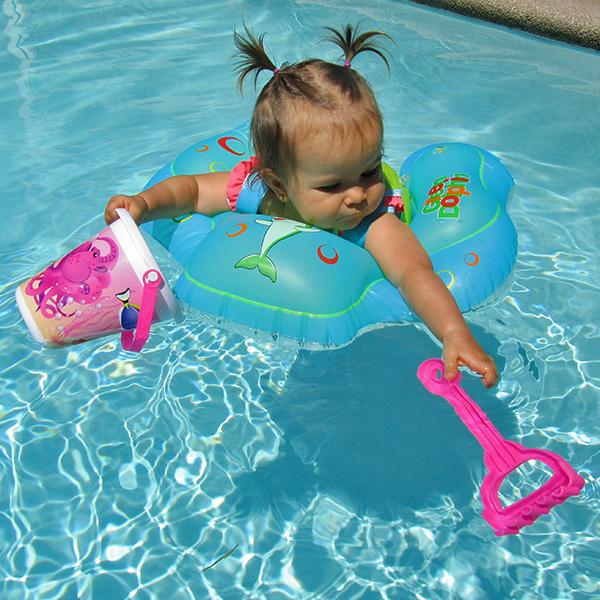Water safety if you have babies or children is something we should consider all year round, but it becomes even more important in the summer, since there are many more risks. That's why we made this post with the most relevant information provided by the American Academy of Pediatrics and that everyone at home should know.
Surveillance at all times
The American Academy of Pediatrics is adamant that babies and children should be supervised by an adult at all times when they are in or near water. This applies to spas, pools, tubs, streams (even small ones), etc. It is also recommended that the adult know how to swim. In the case of babies and small children, this supervision should be “contact” – that is, holding hands or with some physical contact.
"Guardian in the water"
If you are meeting with several adults and children, you can designate one adult to be the “water guardian” (responsible for watching the little ones) for a certain amount of time, and take turns with other adults. Of course, it is recommended that this guardian knows how to swim, and more importantly, that he or she is attentive at all times, without distractions such as the phone, drinking alcohol or other activities.
Swimming pools with safety fences
Pool safety fences have been proven to be the most effective way to prevent drowning in young children.
Important features:
- Height of 1.21 meters (4 ft.) on all 4 sides. This height must at least surround the entire pool and be separated from the house and the patio or garden where it is installed.
- Climb-proof. There should be no footholds or handholds, and no nearby objects such as furniture that a child could climb on. For this reason, chain link fencing is not recommended.
- Space between bars. To prevent children from climbing over them, it should not be more than 4 in. (10.1 cm).
- Closing height. It should have a self-closing latch and a gate that only opens outwards. The gate should be out of reach of children, at least 1.37 m (54 in.) from the ground. When the pool is not in use, be sure to lock it.
Pool alarm
Pool alarms can detect ripples on the water's surface and sound a warning if someone has fallen into the pool. Make sure they are working and have fresh batteries, but be careful: they are no substitute for the safety of a fence.
Pool cover
They should cover the entire pool securely so that the child cannot slip underneath. Make sure there is no standing water on the cover - children can drown in less than 2 inches (5.08 cm) of water. Automatic pool covers are usually the safest and easiest to use.
Please note that solar floats (for heating the pool) and winter covers are not safe covers.
Swimming lessons
The APP recommends that children and adults learn to swim and be aware of water safety measures. Every child is unique so there is no specific age at which they should learn, but there is evidence that swimming lessons can reduce the risk of drowning, including for infants and children between 1 and 4 years old.
Knowing how to swim is only one part of the safety measures when in the water, so even if your little one knows how to swim , you should not forget the rest of the precautions we mention in this post.
Beaches/pools with lifeguards
When choosing a beach/pool to visit, choose those that have a lifeguard, and check that they are designated as safe swimming areas (in the case of spas).
If you are visiting a beach by the sea (especially in Chile with the force of the Pacific Ocean) remember that there may be currents, changes in the tide and unexpected unevenness in the sand when entering the water.
Life jacket
When choosing a life jacket for your little one, make sure it fits their size and weight, and that it complies with safety regulations. It is also recommended that they wear it when in the water, but also outside if they are near a pool or a place with water where they could fall.
Other security measures
- CPR training. Parents, caregivers, and pool owners should know how to perform CPR (cardiopulmonary resuscitation) and how to call for emergency help.
- Check the water first . If you cannot find your child at any time , look for him/her in the pool or spa first.
- If you are supervising children in the water, have a float or object that can be used for rescue handy .















